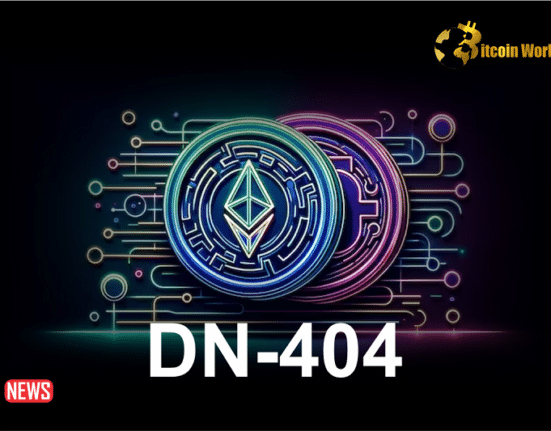Large-scale corporations such as Starbucks, Microsoft, and large banks are embracing the blockchain revolution. They’re not only interested in the technology, but also in the implications for their business practices. What is the value of the crypto niche for embedded firms, and how are web3 and blockchain transforming business solutions?
The entire extent to which blockchain technology and Web 3.0 will provide business solutions to huge organizations is unknown. Certain basic principles, however, like tokenization, user governance, decentralization, and a new interconnection, embody the new iteration of how they will conduct business.
The Evolution of the Web
Tim Berners Lee devised the initial generation of the World Wide Web, subsequently known as Web 1.0, in 1989. The basic web languages HTML and HTTP were invented by the British computer scientist.
Most ‘normies’ were just oblivious of the web until 1993, when Mosaic, the first popular browser, was released. Google (which recently celebrated its 25th anniversary) controlled the search engine business in a matter of years, and Web 2.0 was born. An improved interactive web with features such as blogs and social networks that gave our time ‘online’ a whole new meaning.
Web3: The Third Generation
The internet has come a long way since its inception, and the reasons why people check their phones first thing in the morning and last thing before bed are certainly far from the original vision of the internet’s forefathers.
But what if we told you that the way the internet already controls our lives pales in comparison to what will happen when we embrace Web 3.0?
As Web2 evolves, its powers to modify what we hold dear (and not so dear) will rise, thanks to the underlying blockchain technology that this next evolution employs.
Business Solutions for Enterprises using Web3 and Blockchain
As previously said, blockchain is a critical underlying technology with innovative capabilities that operate in the background. However, things become more substantial when these underlying codes are deployed in real-world application layers rather than just for speculation or capital gains-driven hype.
Blockchain technology can and is being used in a variety of industries. Consider the following application layers:
Finance
Crypto, which was once a major “FU” to the banking sector, is gradually losing its basic message. As banks adapt to current developments, the anti-bank rhetoric may backfire as these affluent industries adopt whatever the blockchain deems essential.
According to a recent CitiBank interview (video below), the sector intends to use blockchain technology to provide a “always-on” infrastructure that operates 24 hours a day, seven days a week. This is due to the fact that large international clients frequently need to maintain many bank accounts across regions for payments, which is both costly and inefficient for both parties. Blockchain addresses some of these issues.
Aside from tokenized deposits, programmable tokens via smart contracts have functions that help bankers as well. The implementation of smart contracts means, in their instance, laying off personnel and minimizing paperwork by eliminating the intermediary through automation.
Crypto fans should not be alarmed or believe the game is over. They should also not expect their investments in “banking” coins to increase as Citibank and other institutions work to create permissioned blockchains. If banks adopt blockchain and Web 3.0, it will be on their terms and on a permissioned basis.
Consumer Behaviour
Remember that what drives huge organizations are their ‘consumers,’ and unlike their treatment on Web 2.0, where digital behemoths monetize user data and treat them horribly, Web 3 promises a brighter future. But what advantages does Web 3 provide to these digital behemoths?
Well, the non-fungibility of tokens – NFTs on Web 3 enables activities such as identity ticketing, digital ownership, and loyalty programs without the burden of merging separate papers and has a good impact on the brand interaction with customers.
Decentralized Autonomous Enterprise
Decentralization in business solutions refers to a change in control from central authority to the voice of individual players. Businesses may begin to pay more attention to and cater to local communities in order to increase the quality of interactions between customers and sellers.
Community-specific kinds of money can be developed utilizing enterprise native tokens. And those might be utilized to create other currencies, enticing the community to participate and grow even more loyal to their preferred company.
New Data Economy
Another pillar of blockchain is the distributed ledger, which serves large organizations as well.
Because no single organization has access to the data required to solve systemic global issues, enterprises may find it beneficial to collaborate and share data on the blockchain.
This includes, for example, corporate solutions to carbon emission quotas imposed on major corporations by huge governments and regulatory frameworks.
The immutable ledger’s transparency can help develop confidence between companies or the general public, and it allows businesses to cut wherever necessary without manipulating.
Read Also: The Role of Cryptocurrencies in Financial Inclusion
Supply Chain Management
This tamper-proof method provided by blockchain is also suitable for better supply chain management, which, due to their interdependence, causes numerous business challenges. Large organizations can now concentrate on product traceability, authenticity, process transparency, and the digital representation of physical assets.
Companies, for example, may now trace items from raw materials to the final customer, providing insight into industry bottlenecks and pain points. In the midst of an energy and climate crisis, this skill might significantly cut energy waste and improve efficiency.
What Is Holding Back Web3 & Blockchain Transforming Business Solutions?
So, why isn’t every organization on the blockchain, and why are we still talking about widespread blockchain adoption? Because there are still some barriers preventing large organizations from completely embracing this new technology.
One of the most significant challenges is the intricacies that comprise ‘the’ blockchain, if one exists. As a result of the lack of education, many businesses are unsure where to begin and may need to establish a proper strategy.
Web3 does not interface well with current systems in other organizations, thus we see them forking old chains and updating the code where necessary, even if it means developing an altogether new system.
Other challenges arise when looking at regulatory issues and their lack of clarity. If authorities eventually provide a real, reasonable, and unambiguous framework, we may see more businesses dabbling in decentralized waters.
Conclusion
Knowing what is happening in the public eye, we can use our imagination to fill in the blanks regarding what might be going on behind the scenes. It’s safe to say that major corporations are investigating or are currently utilizing blockchain technology for business solutions.
As the list of use cases for our crypto niche grows, we see that the most applicable business solutions this new generation has to offer include managing large amounts of data, creating a new economy, and providing a tamper-proof infrastructure that can assist in coordinating organizations all over the world in search of a better future.















